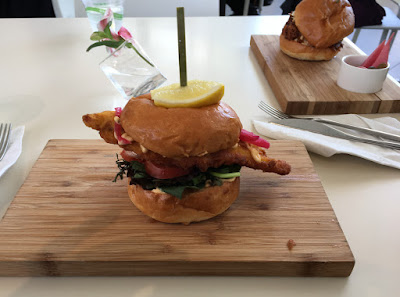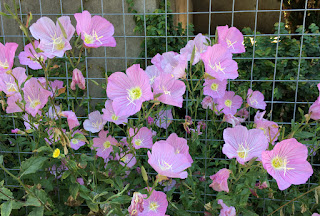I've organized one of the book fair panels, titled "Narrating the Anthropocene" and I hope you can make it! We're on from 1:30 - 2:30 pm.
What's "the Anthropocene," you ask? It's a name proposed for the current geological epoch, signifying an era of Earth's evolution that is characterized by human impacts on the planet, including impacts driving climate change and the Sixth Extinction, changes in biogeography, accretion of the nuclear fallout and radionuclides produced by thermonuclear weapons tests, etc. The "Anthropocene" designation has been formally recommended to the International Geological Congress, but is already in widespread preliminary or informal use among scientists and environmentalists.
When the call went out from HZBF organizers for panel topics I began thinking about commonalities among the most powerful and gripping accounts of threats we and the co-inhabitants of our biosphere are facing in this third century since the Industrial Revolution began. Whether the accounts are fiction or nonfiction, books or articles, text-centric or illustrated (as in comic books and graphic novels), I would say the most moving and influential go well beyond aggregation of facts, figures, and statistical trends: they're centered and grounded in story.
Hence, "Narrating the Anthropocene."
Here's a description of the panel:
In reaching for the heart and the human in books that grapple with dire threats to our only biosphere, narrative -- the art of storytelling -- is a crucial tool for writers working in all genres. As our world spins further out of equilibrium than ever before in recorded history, writers of fact and fiction are calling all hands to overcome denial and paralysis, and to prepare humankind to survive the catastrophes we fail to avert. Join a panel of authors who are narrating the Anthropocene as journalists, novelists, comic book authors, and scientists as they explore the role storytelling plays in rousing humanity to engage with the crises of our current century."Narrating the Anthropocene" will include authors with backgrounds as journalists, scientists, and activists, whose work spans fiction, nonfiction, and comic book forms. Here's the lineup:
Liz Carlisle, geographer and lecturer in Stanford’s School of Earth, Energy, and Environmental Sciences; and author of Lentil Underground: Renegade Farmers and the Future of Food in America, a work of narrative nonfiction that straddles the border between a case study in building sustainable food systems, and a heroic account of prairieland farmer Dave Oien struggling to sustainably farm his acreage in north-central Montana.
Michael J. Fitzgerald, journalist and novelist, author of The Fracking War and Fracking Justice, in which a small town newspaper takes on a fossil fuel behemoth to protect land and communities in upstate New York.
Steve Masover, novelist, activist, and author of Consequence, in which a San Francisco activist loses faith in the impact of non-violent protest and becomes entangled in an eco-saboteur’s desperate conspiracy.
Jean Tepperman, Bay Area journalist, activist, and author of the comic Warning from my Future Self about building urban community to collectively cope with the effects of climate change.
It's been a delicious pleasure getting to know these authors and read their work as we prepare for next month's panel. I hope you'll have a chance to join us; to check out some of the other panels and panelists at this year's Howard Zinn Book Fair; and wander among the exhibitor tables where you'll find terrific books and opportunities to engage with the authors and publishers who brought them into being.
Again, "Narrating the Anthropocene" starts at 1:30 pm on 19 November, at the Mission Campus of City College of San Francisco (1125 Valencia St, between 22nd and 23rd, a few blocks from 24th Street BART - map). You can RSVP on Facebook if you like ... I hope to see you there in any case!
Related posts on One Finger Typing:
Pre-apocalyptic fiction: staving off catastrophe
Activist fiction: it's about engagement, not about The Issue
Howard Zinn Book Fair returns to San Francisco on Sunday Nov 15th
Radical Storytelling: Howard Zinn Book Fair photos and video
Pre-apocalyptic fiction: staving off catastrophe
Activist fiction: it's about engagement, not about The Issue
Howard Zinn Book Fair returns to San Francisco on Sunday Nov 15th
Radical Storytelling: Howard Zinn Book Fair photos and video


































